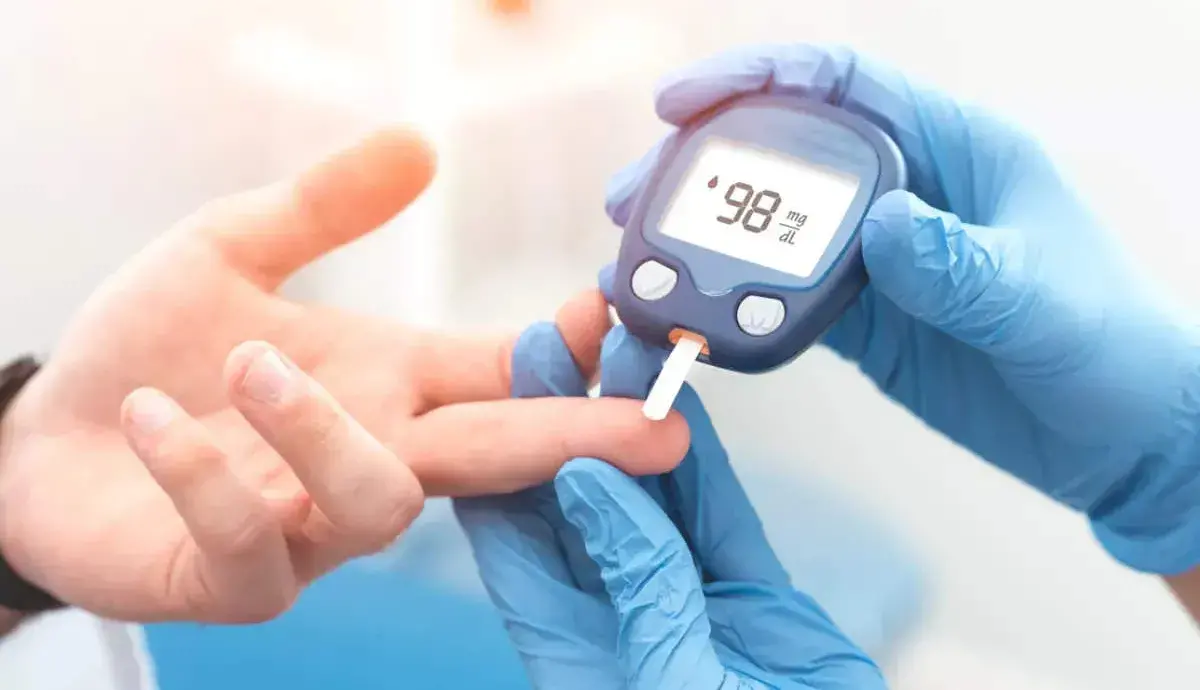Type-2 Diabetes

What Is Type-2 Diabetes?
Diabetes type two may be a lifelong condition that impacts how your body processes insulin, a hormone that regulates blood sugar. This form of Diabetes is commonly associated with insulin resistance, meaning the body cannot use insulin efficiently. While diabetes type two often develops later in life, it's becoming more prevalent in younger populations due to factors like childhood obesity and poor diet.
Diabetes type two was once known as non-insulin-dependent diabetes mellitus (NIDDM). Today, with rising cases among younger people, it is more frequently diagnosed in children and teenagers. Still, older adults, particularly those over 45, remain the most affected group by Diabetes type two.
In the U.S. alone, approximately 29 million people have diabetes type two, while another 84 million have prediabetes—a condition in which blood sugar is higher than normal but not yet in the diabetic range. Addressing this stage early could prevent the onset of diabetes type two.
What are diabetes symptoms? Often, diabetes symptoms can be mild and easy to overlook. It's not uncommon for people to live with diabetes type two for years before it's diagnosed. Below are some of the most common indicators of Diabetes:
Signs and Symptoms of sort two polygenic disease
The symptoms of sort two polygenic disease may be thus gentle that you just do not notice them. concerning eight million folks that have it do not know it. Symptoms include:
- Being terribly thirsty
- Peeing heaps
- Blurry vision
- Being cranky
- Tingling or symptom in your hands or feet
- Fatigue/feeling drained
- Wounds that do not heal
- Yeast infections that keep returning
- Feeling hungry
- Weight loss while not attempting
- Getting additional infections
If you notice any dark patches of skin around your neck or armpits, you may be developing insulin resistance, a precursor to Diabetes type two. It's crucial to know what are diabetes symptoms to catch the disease early.
Causes of sort two polygenic disease
The main issue behind Diabetes type two is insulin resistance. Insulin, produced by the pancreas, helps your cells convert glucose (sugar) into energy. With diabetes type two, your body produces insulin, but your cells don't use it as they should. This forces your pancreas to make extra insulin to compensate. Over time, it may struggle to keep up, leading to elevated blood sugar levels, a hallmark of Diabetes.
The causes of diabetes type two are multifactorial and may include:
- Genetics. Specific genes affect insulin production and how your body responds to it.
- Weight. Being overweight, particularly if you carry excess weight around your abdomen, can increase the risk of Diabetes type two.
- Metabolic syndrome. A group of conditions including high blood pressure, high cholesterol, and insulin resistance, often accompanies diabetes type two.
- Liver Glucose: . Your liver might release extra glucose when your blood sugar levels drop, even when it isn't necessary, contributing to Diabetes.
- Cell Miscommunication. Sometimes, cells send incorrect signals, which can affect how insulin is used or produced.
- Beta Cell Dysfunction. These cells in the pancreas are responsible for producing insulin, and their malfunction can lead to diabetes type two.
Risk Factors for Diabetes Type Two
Several risk factors increase the likelihood of developing diabetes type two. The more risk factors you have, the higher your chances. These include:
- Age: Individuals over 45 are more susceptible.
- Family History: A parent or sibling with Diabetes increases your risk.
- Ethnicity: Certain groups, including African Americans, Native Americans, Hispanics, and Pacific Islanders, are more prone to diabetes type two.
- Prediabetes: Elevated blood sugar levels that are not yet at diabetic levels can eventually lead to diabetes type two.
- Heart Disease: Having a history of heart disease or vascular problems raises your risk.
- Overweight: Being overweight or obese is one of the most significant risk factors.
- Gestational Diabetes: Women who had diabetes during pregnancy are more likely to develop diabetes type two later in life.
- PCOS: Women with polycystic ovary syndrome are at increased risk
- Depression: Mental health conditions like depression can also elevate your risk for Diabetes.
Diagnosis and Testing for Diabetes Type Two
To confirm if you have diabetes type two, your doctor will perform several tests. One of the most common is the A1c test, which gives an average of your blood sugar levels over the past two to three months. Another option is the fasting blood glucose test, where you must fast for at least eight hours before having your blood sugar checked.
In some cases, an oral glucose tolerance test (OGTT) may be performed. This test measures how well your body handles glucose after consuming a sweet drink. These tests are crucial in determining whether you have diabetes type two or another form of Diabetes.
Managing and Treating Diabetes Type Two
Living with Diabetes type two requires ongoing management, combining lifestyle changes and medications. The first line of treatment often involves lifestyle adjustments, including a healthy diet, weight loss, and regular exercise.
Losing just 5-7% of your body weight can improve your body's ability to use insulin and help lower blood sugar levels. Consulting with a registered dietitian can also help you create a balanced eating plan that fits your needs.
For those who can't manage their Diabetes with lifestyle changes alone, medications like Metformin, sulfonylureas, and insulin may be necessary. Each case of diabetes type two is unique, so it's essential to work closely with your healthcare provider to find the best treatment plan for you.
Guides
- Benefits of Protein
- 7 Healthy Eating Habits
- 7 Most Effective Exercises At Home
- Home Workout Plan Without Equipment
- Top 10 Biggest Nutrition Myths
- How To Get Flexible Body?
- Weight Loss VS Fat Loss
- What is Keto Diet?
- What Is Minerals?
- What Is Digital Marketing ?
- Best Free Tools For Beginner You Tubers
- Best Teas For Weight Loss & Fat Burning
- Green Tea: Health Benefits And Side Effects
- Yoga for Weight Loss and Fat Burning
- What Is Type-2 Diabetes?
- How To Write Eye-Grabbing Resume
- The Ultimate Guide To Prepare For An Interview
- 10 Best Health Benefits Of Eating Mango
- healthy eating habits for kids
- 10 tips for starting your Fitness Transformation
- 10 Reasons Why People Hate Gym & How to Overcome Them
- Fuel Your Passion For Nutrition: Explore The Power Of A Nutrition Course
- Shed Pounds with Ease: Vegetarian Diet Plan for Weight Loss Revealed!
- Anabolic steroids: Types, Uses, and Side Effects
- Find Your Path to Success: Choosing the Right Fitness Certification Program in India
- learn gym trainer course offline at surat with best faculties
- Learn about Body Composition and How it Affects Your Health
- Nutrition course online with affordable fees
- Online Dietitian Plan vs In-Person Consultation: Which is Right for You?
- The Importance Of Fitness Education In Today's World


About Dr.Gautam Jani
Dr. Gautam is a civil engineer. By passion he is a dietitian and had started practising it in the year 2016. He is the founder of fitnesswithgomzi firm established in 2018. He has achieved many certificate from ACSM, ISSA and VLCC.

